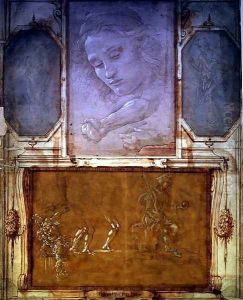Raphaello del Garbo Capponi Paintings
Raffaello del Garbo, sometimes known as Raffaellino del Garbo or Raffaello Capponi, was an Italian painter of the Renaissance period. Born in Florence in 1466, he was a contemporary of other renowned artists such as Sandro Botticelli and Filippino Lippi. Little is known about his early life, but it is believed that he began his artistic training in the workshop of Filippino Lippi, where he would have been exposed to the Florentine style that dominated the period.
Del Garbo's work is characterized by its delicate grace and the use of color, which he may have developed under the influence of Lippi and Botticelli. Throughout his career, Raffaello remained in Florence, where he contributed to the rich tapestry of Renaissance art that was flourishing in the city. His work included religious paintings, frescoes, and altarpieces, many of which displayed the influence of his early training and the prevailing styles of the time.
Despite his talent, Raffaello did not achieve the same level of fame as some of his contemporaries. His works were often noted for their beauty and craftsmanship, but he did not develop a significantly distinct style that set him apart from other artists of the era. Nevertheless, his paintings were sought after, and he received commissions from various religious institutions.
One of his notable works is the 'Madonna and Child with Angels', which showcases his ability to create tender and serene religious scenes. Another significant piece is the 'Baptism of Christ', painted for the Church of the Carmine in Florence, which illustrates his capacity for composing complex compositions with multiple figures.
Raffaello del Garbo's career spanned the late 15th and early 16th centuries, a period that saw the transition from the Early Renaissance to the High Renaissance. Although his contributions may not have garnered the same historical attention as some of his illustrious peers, his paintings remain valuable examples of the era's artistic achievements.
Raffaello del Garbo died in Florence in 1524. His works can still be seen in various museums and churches, primarily in Italy, where they continue to be appreciated for their elegance and historical significance.




